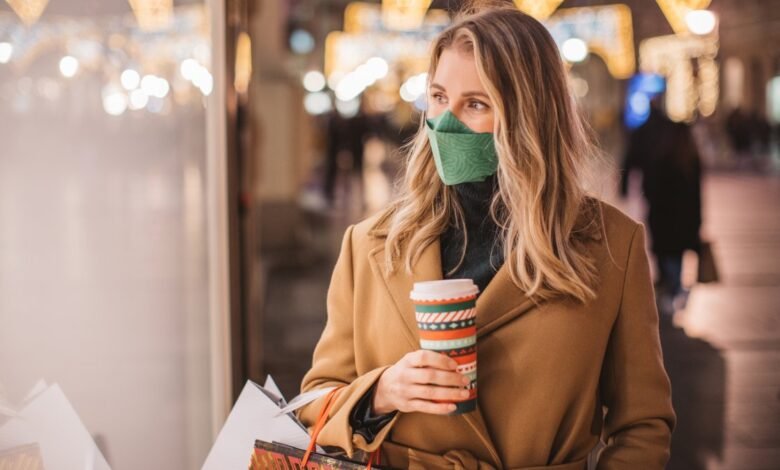A ‘silent’ COVID surge may hit the US over the holidays – NBC New York

As the holidays arrive and travel peaks, COVID-19 is on the rise again across the country. However, this year’s winter COVID wave is off to a later start than usual, and some experts are warning about a potential “silent” surge in transmission over the holiday season.
They’re calling it “silent” because this winter wave follows a long period of unusually low COVID activity this fall, so many people are unaware that COVID levels have risen sharply over the past two weeks, the most recent wastewater data from the U.S. Centers for Disease Control and Prevention show.
As a result, people may not know their risk of infection is increasing and not test if they have only mild symptoms, which can cause the virus to spread at holiday gatherings, during travel and more.
As of Dec. 14, wastewater viral activity of SARS-CoV-2 — the virus that causes COVID-19 — is “high” or “very high” in 21 states, according to CDC data.
“There’s a good chance that a lot of people are going to get sick in the next couple of weeks and be unaware of it. Most people are not tracking CDC data, and so their only way of knowing whether we’re in a wave is if they’ve gotten sick,” Michael Hoerger, Ph.D., associate professor at Tulane University School of Medicine and public health expert on tracking COVID-19 trends, tells TODAY.com.
While the data do not yet show the U.S. is in a large COVID surge, the country is entering its 10th COVID wave since the pandemic started, Hoerger adds.
But there’s a great deal of uncertainty about how bad this year’s winter wave will be and how long it will last. “This is a very risky time in terms of lots of people interacting indoors, so we don’t really know how quickly transmission can pick up,” Hoerger says.
A risk of “silent” transmission over the holidays
Wastewater levels of COVID-19 are lower than they were at this point last winter, but there has been a sharp uptick in the last two weeks, according to data from the CDC. And cases will likely continue to increase, experts say.
“As of Friday, Dec. 20, COVID-19 levels in wastewater are moderate nationally,” Dr. Jonathan Yoder, deputy director of the CDC Division of Infectious Disease Readiness and Innovation, tells TODAY.com. Wastewater data from the prior week was “low” nationally. Levels are highest in the Midwest.
“Nationally, COVID-19 levels in wastewater have been increasing through the month of December, following a period of low levels in October and November,” Yoder adds.

The CDC no longer tracks the total number of new COVID cases in the U.S., instead estimating transmission levels using wastewater surveillance, test positivity and emergency department visits.
COVID test positivity is at 5.6%, up 0.5% from the previous week, per CDC data. COVID-related emergency room visits and deaths are also increasing very slightly.
“The issue with this winter’s wave is it’s a lot different than previous ones,” Hoerger explains. In past years, COVID has followed a similar pattern: Cases ramp up in November, increase steadily and peak around late December or early January.
“Normally people would have had a month or so of warning by now, seeing friends and family getting infected,” says Hoerger.
“Transmission was freakishly low for November, and so people are kind of lulled into a false sense of security,” he adds.
COVID-19 levels are ticking up about a month later than usual, which puts the country into “uncharted territory,” according to Hoerger.
“You can think of the start of the wave as kind of a silent transmission period where people aren’t really aware of it, and that’s coinciding with the start of holiday travel,” he explains.
Hoerger, who is the director of the Pandemic Mitigation Collective, which uses the COVID-19 forecasting model, projects that as of Dec. 16, one in 64 (1.6%) people are actively infectious in the U.S., and there are about 750,000 new daily infections, and these are rising.
This COVID-19 wave is coming on late and “out of nowhere,” he wrote on X.
PMC COVID-19 Dashboard, Dec 16, 2024
🧵1 of 8🔹1 in 64 (1.6%) actively infectious in the U.S.
🔹750,000 new daily infections and rising
🔹Highest % increase in transmission in nearly 3 years
🔹10th wave is the “silent surge,” coming on late out of nowhereThe video will walk… pic.twitter.com/qhcNm3EdTi
— Mike Hoerger, PhD MSCR MBA (@michael_hoerger) December 16, 2024
Other experts agree that infections are expected to go up in the coming weeks.
“We anticipate that these holiday gatherings and traveling and all that will provide opportunities for an increase in COVID, as well as (influenza) and RSV,” Dr. William Schaffner, professor of infectious diseases at Vanderbilt University Medical Center, tells TODAY.com.
“It’s silent (transmission) because most of these infections are quite mild so people are not testing, or they’re blowing them off as a cold,” Schaffner adds.
While this year’s late summer COVID surge provided the U.S. population with some immunity, it’s likely starting to wane, the experts say. And the current variants circulating, including XEC and the decedents of the FLiRT family, are highly transmissible.
“These current variants are causing a lot of milder infections, which are going largely undetected,” says Schaffner, adding that people with mild or no symptoms can still spread the virus to others.
“The communicability of these viruses is contributing to a silent epidemic, if you will,” says Schaffner.
Where COVID is spreading in the U.S.

Wastewater viral activity of COVID is currently “very high” in 5 states and “high” in 16 states, according to the latest CDC data. The states that have the highest COVID wastewater levels as of Dec. 14 include:
- Arizona
- Arkansas
- District of Columbia
- Illinois
- Indiana
- Iowa
- Kansas
- Kentucky
- Maine
- Massachusetts
- Minnesota
- Missouri
- Nebraska
- New Hampshire
- New Mexico
- Ohio
- Pennsylvania
- Rhode Island
- South Carolina
- South Dakota
- Wyoming
“If you see increased COVID-19 wastewater viral activity levels in your area, it might indicate that there is a higher risk of infection,” says Yoder.
However, regional variation in wastewater data also depend on the number and specific location of wastewater surveillance sites that are monitoring, says Hoerger. Some states have no data, and others only have limited coverage. “Take regional variation with a grain of salt,” says Hoerger.
Overall, decreases in testing and lags in reporting can make it challenging to accurately track COVID-19 levels, the experts note.
COVID-19 symptoms in 2024
The symptoms caused by the dominant variants circulating, XEC and KP.3.1.1, are very similar to those caused by previous omicron subvariants, according to experts.
Common COVID-19 symptoms include:
- Sore throat
- Congestion
- Runny nose
- Cough
- Fatigue
- Headache and body aches
- Fever or chills
- Shortness of breath
- Nausea or loss of appetite
- Diarrhea
- Loss of sense of taste or smell
Symptoms will vary from person to person. Even milder infections can be “debilitating” for several days, says Schaffner.
Although the latest COVID-19 variants appear to be causing milder disease, they can still cause severe illness requiring hospitalization. Certain people are at higher risk of developing severe disease. These include people over the age of 65, people with underlying medical conditions and people who are immunocompromised.
Every time a person is infected with COVID, they are at risk of developing long COVID, which can cause symptoms that persist and reemerge for weeks or months after infection, per the CDC.
Are new COVID boosters effective?
The updated COVID-19 vaccine for 2024–2025 is recommended by the CDC for everyone ages 6 months and older.
The new mRNA COVID vaccine is monovalent, which means it targets one variant — in this case, the KP.2 “FLiRT” variant. The strains currently circulating are closely related to KP.2, and the new booster should provide good protection, TODAY.com previously reported.
However, uptake of the new vaccine has been low so far — just 21% of adults in the U.S. have gotten the shot, per the latest CDC data.
“The best protection is to get vaccinated. Although vaccinated people sometimes get infected with the virus that causes COVID-19, staying up to date on COVID-19 vaccines significantly lowers the risk of getting very sick, being hospitalized, or dying from COVID-19,” says Yoder.
How to protect yourself against COVID-19
When COVID-19 levels are rising, it’s important for people to take steps to protect themselves and their families, according to the CDC.
You can take the following actions to avoid infection and prevent spreading COVID-19 to others:
- Stay up to date on COVID-19 vaccinations.
- Test if you have symptoms or an exposure.
- Stay home when sick.
- Seek treatment for COVID-19 if you are at high risk.
- Wear a mask.
- Practice social distancing.
This story originally appeared on TODAY.com. Read more from TODAY:





